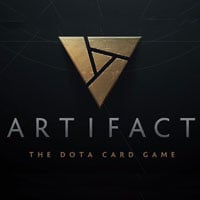General Tips for Artifact: The Dota Card Game
Last update:
Draft is one of the two most important modes in Artifact. Unlike Constructed mode in Draft you do not use your own cards, but rather cards that you choose from random sets of cards. So there is no way to download a ready deck from the Internet. Half of the success will be your ability to assemble and plan your own deck. In this chapter you will find practical advice on drafting and the rules you should follow when folding a deck. In the next chapter you will find a table with card's descriptions including their strength and usefulness.
General Advice
- Draft is not a Constructed. You can't predict what cards you're going to draw, so instead of using a specific and strong tactics that you may never be able to redeem, it's better to simply choose the strongest cards possible.
- Don't focus on any particular flush for the first three packages. In Artifact, some cards are much stronger than others, and it is these cards that should have priority in the drafts regardless of their flush. Only with the last two packets try to match your existing set of cards.
- The strength of the drawn cards should determine the number of colors in your deck. If you were lucky and drew very strong cards in four different colors, even a four-colored deck can be a good (though risky) choice. In a draft, a three-color deck is almost always the best choice.
- Always try to have 40 cards and 9 items in your deck. A larger number is not recommended.
- Be careful with taking multiple cards of similar utility. You don't need 8 cards to carry heroes or many strong creatures, which you can never use, because the enemy will beat you in earlier rounds.
Deck Heroes
- A good selection of heroes in many cases determines whether you win or lose matches, so think carefully before you choose one.
- From each of the five packages you have to choose one hero. If you don't do this, in the last round of the package, the game will give you a completely random hero. Waiting until this point is quite risky.
- If you have the option to do so, always choose a hero of level S or A. They give you a big advantage in drafts.
- Once you've completed the random draw, you'll move on to the stacking stage. The game will give you the access to one additional hero of each color: Debbi the Cunning (black), Keefe the Bold (red), Farvhan the Dreamer (green) and J'Muy the Wise (blue). When choosing heroes from packages, consider whether they are stronger than the basic ones. If not, there is rather no point in choosing them.
- If you hit a super strong S-level hero (e.g. Axe) in a draft, it's a good idea to choose him even if there aren't many of his cards in your deck.
- The order in which the heroes are displayed is very important. In the first round you don't know what the situation on the board will look like and you won't have too much mana to react, so it doesn't pay to put up heroes with a small number of health points. If such hero hits a strong opponent (hero) on the other side, he may already die in the first round.
- If you have a hero of a particular flush, try to have at least 9 cards of that flush in the deck.
Items
- When you set your deck you will always have access to three Traveler's Cloak and three Short Swords. These are very good items, which are especially handy at the beginning of the game. If you want to choose a different item from the random sets, always make sure that it is much better than the mentioned two (consider its price!).
- Very strong and expensive items such as Horn of the Alpha should only be picked if you have black cards that generate a lot of gold in your deck. Otherwise, collecting gold will require saving money and passing the purchase of cheap items, which can be very painful at the beginning of the game.
- A super useful item is the Blink Dagger, which will give you more control over the battlefield. It almost always pays to have two such items at your disposal.
You are not permitted to copy any image, text or info from this page. This site is not associated with and/or endorsed by the Valve Corporation or Valve Corporation. All logos and images are copyrighted by their respective owners.
Copyright © 2000 - 2025 Webedia Polska SA for gamepressure.com, unofficial game guides, walkthroughs, secrets, game tips, maps & strategies for top games.
